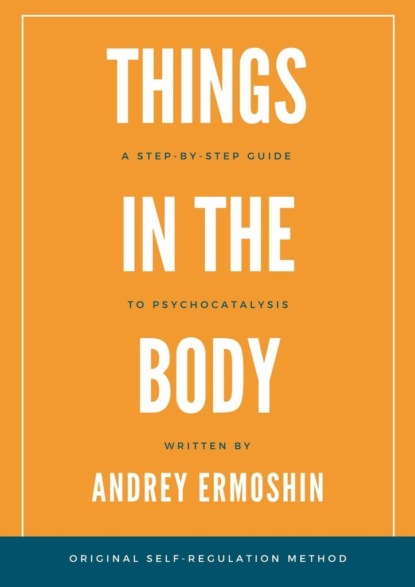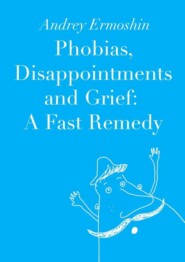По всем вопросам обращайтесь на: info@litportal.ru
(©) 2003-2024.
✖
Things in The Body
Настройки чтения
Размер шрифта
Высота строк
Поля
Today, while working through «a given’ energy structure rather than an innate genetic one, I often met the descriptions of «strange’ feelings experienced by my patients. For me, the style of such descriptions is important. It can be epileptoid-photographic, cycloid-colorful, or schizoid-abstruse, or organically flattened. Knowledge of the patient’s character remains essential, but no less important is the fact that there is practically nobody who is unable to describe what is felt. The body experience, (or «experiences of the body’) is a phenomenon which is quite natural to people of any constitutional and genetic type and culture.
Bodily experience, conscious or unconscious, is constantly presented in the normal human sensory system. The only real «strangeness’ of descriptions of body sensations in the somatopsychotherapeutic process, is that they are made in the form of describing objects, which was not done before. It will be discussed below.
Sometimes patients can be surprised by the nature of their perception when referring to their feelings. They even ask in embarrassment: «Do you have a lot of crazy people like me?» The perception of what is felt in images is not a sign of mental illness. On the contrary, the ability to perceive indicates mental health. If we talk about diseases, it turns out that «snakes in the head’ are more a sign of pre-stroke than schizophrenia.
During the observation of the object descriptions of experiences it was found that the results of self-examination of the body sensations can serve, firstly, to activate the processes of natural self-regulation in the body (through the inclusion of the feedback mechanism) and, secondly, to organize accelerated changes in the mental status of the patient through focusing on this process.
An overview of the work with sensations
If we talk about the main issue of psychotherapy, it is, in my opinion, as follows: to get quickly to the mental charge which is «knocking down the patient’s energy circuit’ and decide on what to do with it.
There are a number of approaches to solving this issue, e.g. psychoanalysis with its method of free associations and catharsis while understanding the «primal scene’; gestalt therapy, which aims to modify the expression of feelings through finding a «formula’ of constructive appeal to the «addressee’, etc.
SPT implements a specific approach. In the diagnosis, it suggests turning to body sensations, finding unresolved experiences by their «mass’ (the technique of «objectification of sensations’), and in the therapy – calming downwithout preconditions, (the technique of «zeroing’). The special issue is obtaining new experiences.
Phases of work with sensations
Diagnostic phase
1. “Where?” (Sensations, associated with the experience – at the level of head, chest, abdomen?)
2. «What?» (Is it something big or small? Light or dark? Heavy or lightweight? The image of what is it?)
Evaluation phase
1. Can it be bigger or smaller?
2. What parts of the body are «de-energized’?
3. Did it emerge recently or long ago?
4. Under what circumstances?
5. Was it brought from the outside or formed inside?
6. What condition does it correspond to?
7. Does it solve problems or complicate them?
8. Do you want to continue living with this feeling or do you want to part with it?
9. What percentage of your forces is concentrated on it?
10. Would these forces be useful for anything else?
11. Other issues
Therapeutic phase
1. Calming down
2. Suspending
3. Testing of “secondary formations’
4. Application of the forces to new areas of activity
Psychocatalysis of body sensations
The essence of the work can be described as follows: the sensation in the body, corresponding to a certain experience, is objectified from questions about how much it “weighs’, what “volume’ takes, is it “light’ or dark’? After that, a decision about this sensation is made. It is either preserved, “fed’, applied to life in an unchanged or modified form, or, on the contrary, a person chooses to calm down and observes the resorption of this sensation.
After a short conversation, a patient is invited to turn to inner sensation and determine its nature. Where is there an accumulation of heat sensations or gravity? Where, on the contrary, is there a lack of filling?
When the location of the experience is revealed, there is a discussion about the evaluation of this formation which has been subjectively felt inside the body.
If the feeling has a negative impact on the health and way of life of the patient, the therapist invites them to take a decision on this formation or somatic structure. The correct outcome of this part of the work is considered to calm the patients. It is accompanied by the observation of the process of resorption or «shrinkage’ of the specific formation.
At the end of this process, the diagnostic phase is repeated. The key question of this phase is: «What is left in the place of the previous structure?» As a rule, it is defined as something scanty in size, volume, weight, something like a dot or a speck. Then it is specified once again: «Do you need it for something?» If it is not necessary, the patients observe the cleansing of the body from the rest of the experience that has spoiled their condition. Usually it is done by absorption,evaporation, washing out, etc. In some cases, «the dot’ simply «flies away’.
The result of this part of the work is the restoration of the balance of sensations in the body. A program of actions for the future is formed based on this state. A new style of behavior is developed for a problem situation to meet what caused a failure in the patients’ condition.
A series of sessions to «clean’ consciousness leads to a new level of freedom for the patients to use their mental powers and to changes in their way of life.
Diagnostic phase
Patients first come to the doctor, not always knowing what to start with. One thing is obvious to them: they feel bad. What is this «bad’ about? How great are the number of the ways to further communication between two people, one of whom is a doctor and the other the patient? This choice of paths depends a lot on the doctor’s viewpoint.
Thetherapist’s viewpoint
“I’ve slipped away from Aesculapius…”
Let’s consider what usually happens when a person turns to the “classic’ doctor. “What are you complaining about?” The complaints are recounted. Anamnestic data is collected. Then an objective examination is carried out: percussion, auscultation, palpation, followed by instrumental and laboratory studies. The sum of the data allows evaluation of the state of certain organs and to put forward diagnostic hypotheses. Differential diagnosis involves the selection of the most likely conclusions from the list of possibilities. In the future, the diagnosis will be refined using “ex juvantibus’, which is a process of making an inference about disease causation from an observed response of the disease to a treatment. The activity of the doctor at the same time is quite large. The patient is enjoined to be “obedient’, “to bravely endure all the hardships of service.”
Thus, the diagnostician in this relationship is a doctor. Their research tool is their «clinical apparatus’ together with devices that are extensions of their senses. Their direction of examination is the state of organs and systems. The position of the patients is to endure everything, as it is all about their functional status (patient is in Latin – «patient’).
Psychiatrists still maintain the impartial study of the psychopathological phenomena, the definition of symptoms, syndromes and «nosology class’ of the disease.
«Well-collected anamnesis is half the diagnosis» – these traditions are inherited by clinical psychotherapy. On one hand, allowing the participation of the patient’s personality in determining their fate, but, on the other, not overestimating the role of psychological factors in the formation of the patient’s condition. (Excessive psychologization is referred to as false psychology). Clinical psychotherapy is interested in the peculiarities of the constitutional and genetic type of a patient. A therapist plays the role of a mentor or a teacher: «a patient’s job is to be ill and a therapist’s job is to study their illness and to prescribe proper medical procedures’.
Healers without any medical training copy the expert in a parodical way. They know everything for their client, they will tell him everything: what was, what is, what will be, who «did’ it to him. Their main instrument is their intuition. They are ready to answer almost all questions, as well as cure all diseases…
There is a clear difference between the content of professional and non-professional approaches, but they do have one thing in common. They give the patient the role of a mute participant. (By the way, not all applicants for help reject such a passive role. Among the clients there are a lot of undisguised supporters of such a position.)
The directive position of the doctor in relation to the patient was especially present in the initial stages of the formation of psychotherapy. Charcot and his school, Pierre Jean, French doctors Lebo and Bernheim were the researchers of the phenomena of suggestion. August Forel from Switzerland did a lot in the study of somnambulism and the phenomena of hysteria, followed by the discovery of the origins of affective symptoms, particularly hysteria by Breuer and Freud. However, their methods also suggested a greater activity of the doctor.
Dialectical method
Laying the foundations of “psychological’ psychotherapy, Freud made a remarkable move towards greater interaction with the patient in the identification, interpretation and subsequent processing of their condition. However, there were “remnants’ of the old “hypnotic’ period of development of psychotherapy: the patient passively lay on the couch, the analyst was separated from them.







